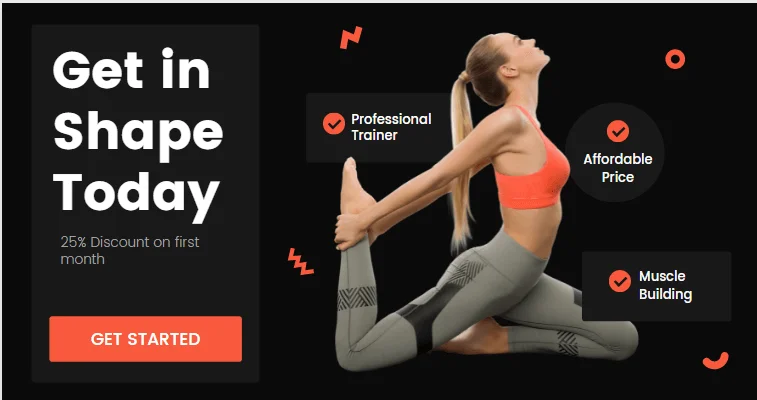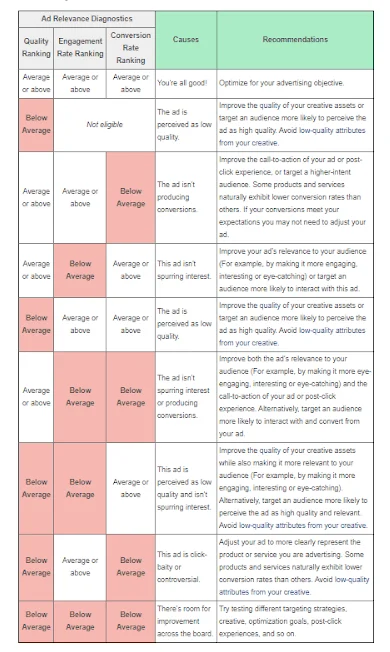
Are you disappointed with the results of your Facebook Ads?
Don’t worry, many businesses are sailing the same boat! They too struggle to get their ads seen by the right people and generate leads or sales.
But don’t despair; there are things you can do to improve your results.
In this blog post, we’ll take a look at 11 reasons why your Facebook ads might not be performing well and the solutions to fix them.
So what are you waiting for? Start reading now!
One of the main reasons Facebook ads don’t deliver is because your target audience is incorrect.
Ensure that you use Facebook’s powerful targeting options and tools like Audience Insights to reach the right audience.
Facebook’s Audience Insights tool helps you find :
Look-alike customers
Demographics of Facebook (location, age and gender ratio, education levels, job titles, relationship statuses)
Interests and hobbies of potential customers.
This information can be useful for
Estimating the size of your target audience,
Filtering them based on location, age, gender etc,
Assessing the gender ratio and their age groups,
Identifying the top cities your target audience comes from
You can then target the correct audience based on this information.
For example, if a wellness company wants to target an audience in the age group 24-65, interested in Health and Beauty, and who speak English, then the Audience Insights tool shows the details for it.
As the target audience size shows a good number, the company can use these audience features while creating the ad copy and expect good returns.

The second major reason for Facebook ads not delivering results is an ad copy that is not up to the mark.
While creating your ad copy, ensure that it:
Speaks directly to your target audience,and
Offers a solution for their problems or struggles.
For example, if you wish to target people interested in fitness and nutrition, create your ad copy with :
Relevant images
Catchy headlines like ‘Get in shape today!’ . This helps you target the needs and interests of your customers thereby generating interest.

If you are unsure of the Facebook ad copy that would work best for your target audience, consider using Facebook’s Inspirations or other mockup tools. They have several templates and examples of Facebook ads from different industries.
[To know more about readymade ad templates , read our article “5 Best Websites to Get Ad Templates for your Facebook Ad mockups” ]
When creating Facebook ads, ensure that you use appealing images to target your audience.
A Facebook ad with a good image stands out from the other Facebook ads in users’ news feeds and draws their attention – which means they are more likely to click on it, as against an unappealing image that fails to attract.
For example, if you want Facebook users interested in home decoration and design trends to click on your Facebook ad, use images of a beautiful home, trendy furniture and so on.

To make your ad copy appealing , Facebook offers several different types of Facebook ad images like:
Individual photo
Photo collages,
Videos,
Carousels (allows viewers to scroll through up to ten images in one Facebook ad), and
Canvas ads (contains multiple elements like photos, text, buttons, and video).
Select your best fit and drive more results.
Facebook research gives an unwritten 20% rule that says images with less than 20% text tend to perform better and give you good results.
So, if your ad copy contains too much text, it may be one of the reasons your ads are not delivering results.
Keep your text short, clear and concise in order to get your message across effectively.
Then re-publish your ads to see the difference.
|
Do ✔
|
Don’t ×
|
If you’re not spending enough money on your Facebook ad campaign or have a tight bid set, it can have a negative impact on the outcome.
Reasons :
The Facebook ad delivery algorithm cannot learn enough when the budget is low and fails to optimize itself for delivering your ads.
When you set a tight bid, the algorithm can’t reach enough of your target audience, and thus stops delivering your ads.
Budget + No Tight bid = Results
In order for an ad to be effective, it needs time to gain traction and reach its target audience.
If you pull the plug off the ad after just a few days, there’s a good chance you won’t see the results you’re hoping for.
Hence, you must publish your Facebook advertising campaigns for a sufficient time period to see good results.
Facebook recommends running your Ads for at least a week.
If you have set a spending limit for your ads, there are chances that you may surpass it.
Facebook automatically stops delivering your ads once it reaches the spending limit and then you may not get the desired results.
To fix this issue, just change or remove your spending limit and re-run your ads.
You may face an audience conflict while running multiple ads for a similar audience.
It results in
Self-Competition,
Hampered Ad delivery, and
Undesired results.
You can use Facebook’s Audience overlap feature to check for such overlaps and resolve the issue.To know more about how to use Audience overlap feature , read [we can have a link to article on Facebook Audience Overlap]
8 Million+ Ready Automations
For 750+ Apps
If you have set the optimization goal to conversions right from the start, it becomes difficult for the Facebook algorithm to learn about your target audience and deliver your ads correctly.
As a result, your ads fail to meet your expectations.
To resolve this issue, set your optimization goal to link clicks initially till you get good clicks and conversions. It helps Facebook learn about your target audience better.
After this, you can change it to conversion and see better results coming.
People prefer seeing only relevant ads. Such ads tend to be less costly and highly performing. It leads to better experiences for people and businesses alike.
Hence Facebook first checks the relevance of your ads and then delivers them to your target audience.
If your ad has a low relevance, there are high chances that Facebook will not deliver your ad, and you won’t get the desired results.
To diagnose this problem, use Facebook’s Ad relevance diagnostics tool and find out if the ads you published were relevant to the audience or not.
The diagnostics assess each ad’s past performance (in the ad auction) with ads competing for the same audience over the selected date range.
It includes your ad rankings for:
Quality
Engagement Rate
Conversion Rate
These help you understand whether adjustments to your creative assets, post-click experience, or audience targeting can improve your future performance.
Reviewing all the diagnostics together gives you more insights than individual ones.
Facebook recommends using the following chart to interpret a given combination of ad relevance diagnostics.

Diagnose your ad relevance and then use the recommendations from Facebook to improve your ad’s performance.
Facebook ensures that each ad running on its platform complies with its ad policy. If your ad fails to do so, Facebook rejects it and notifies you for the same through your Ads Manager.
In such cases, your ad won’t be delivering any results.
An ad can be rejected by Facebook if it contains
Offensive content or images,
Poor ad quality,
Misleading information, or
Prohibited products.
Identify your reason for rejection and fix it using either of the following
Editing and re-approving your ad, or
Making an appeal for incorrect rejection
After exploring all the reasons why your Facebook ads are not delivering the results you want, it’s important to remember that you can always fix them.
Even if you feel like your target audience is too specific or your ad copy isn’t up to par, there are ways to improve your ads and drive better results.
By taking a closer look at your target audience, images, ad relevance, bidding strategy, optimization goals etc, you can start making small tweaks that have a big impact on campaign performance.
Have you tried applying any of these solutions?
Let us know in the comments!